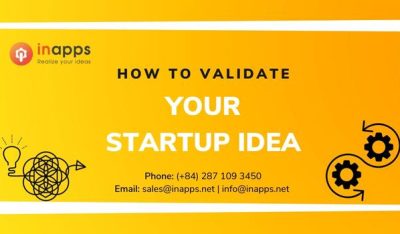- Home
- >
- IT Business
- >
- Internet of Things Explained and Examples
Key Summary
This article explains the Internet of Things (IoT), its examples, history, scale, and the role of InApps Technology in IoT app development. IoT refers to billions of internet-connected physical devices that collect and share data, enabled by affordable processors and wireless networks. Key points include:
- What is IoT?:
- IoT connects physical devices (e.g., light bulbs, thermostats, jet engines) to the internet for data collection and control without human intervention.
- Adds “digital intelligence” to devices, merging digital and physical worlds.
- Examples of IoT Devices:
- Consumer: Smart light bulbs, thermostats, smartwatches, fitness bands, smart TVs, smart speakers.
- Industrial: Driverless trucks, jet engines with thousands of sensors, commercial security cameras.
- Large-scale: Smart city projects using sensors for environmental control.
- Distinction: PCs and smartphones are not typically IoT devices, but wearables like smartwatches are.
- History of IoT:
- Concept discussed in the 1980s–1990s, but technology was initially limited.
- Key enablers: Affordable, energy-efficient processors, RFID tags, broadband, mobile/wireless networks, and IPv6 for sufficient IP addresses.
- Term coined by Kevin Ashton in 1999; technology matured over the next decade.
- Early use: RFID for tracking expensive equipment; now, costs are dropping (potentially to 10 cents per device).
- Scale of IoT:
- Gartner: 8.4B IoT devices in 2017 (31% increase from 2016), projected to reach 20.4B by 2020; spending near $2T in 2017, with China, North America, and Western Europe leading.
- IDC: Spending at $772.5B in 2018 (15% increase from $674B in 2017), projected to hit $1T by 2020 and $1.1T by 2021.
- Device Breakdown: Over half are consumer products (e.g., smart TVs, speakers); business devices include smartwatches, security cameras.
- Spending Categories (2018): Hardware ($239B, modules/sensors), followed by services, software, and connectivity.
- InApps Technology’s Role:
- Vietnam-based leader in IoT, AI, and blockchain app development, ranked #1 in Vietnam and #5 in Southeast Asia for app development.
- Services: Custom AI/IoT app development using neural networks, machine learning, and robotics; IT outsourcing/offshoring; R&D for AI applications.
- Specializations:
- Conversational Apps: Built with DialogFlow for NLP across multiple languages and platforms.
- Chatbots: Developed using Microsoft’s open-source Deep Learning tools, enabling context-aware, self-learning interactions.
- Offers cost-effective solutions and experienced engineers for businesses lacking AI/IoT development resources.
- InApps Insight:
- IoT’s growth, driven by affordable technology and connectivity, transforms consumer and industrial applications.
- InApps Technology leverages its expertise to deliver scalable IoT and AI solutions, helping clients build smart, connected systems efficiently.
What is the Internet of Things?
Internet of Things, or IoT, the internet of things is referring to the billions of physical devices around the world currently connected to the internet, collecting and sharing data. Thanks to a cheap processor and wireless network, it can turn everything from pills to airplanes into a part of the IoT. This adds “digital intelligence” to devices, allowing them to communicate without human involvement and uniting the digital and physical worlds.
-

This is the image description
What are the examples of the Internet of Things?
Pretty much any physical object can be converted into an IoT device if it can be connected to the internet and controlled in that way.
A light bulb can be turned on using the smartphone app as an IoT device, like a motion sensor or an intelligent thermostat in your office or connected street light. An IoT device can be as simple as a child’s toy or as serious as a driverless truck, or as complex as a jet engine currently containing thousands of sensors that collect and transmit data back to make sure it works effectively. On a larger scale, smart city projects are being filled with sensors to help us understand and control the environment.
The term IoT is mainly used for devices that are often not expected to have an internet connection and can communicate with networks independent of human action. For this reason, PCs are often not considered IoT devices and are not smartphones – although they are crammed with sensors. However, a smartwatch or another fitness band or wearable device can be counted as an IoT device.
History of IoT
The idea of adding sensors and intelligence to basic objects was discussed during the 1980s and 1990s, but beyond some initial projects – including internet-connected vending machines – The reason is simply that technology is not ready.
The processor is cheap enough and energy efficient is enough to connect billions of devices. The use of RFID tags – low-power chips that can communicate wirelessly – has solved some of these problems, along with the increasing availability of broadband internet and mobile and wireless networks. Applying IPv6 will provide enough IP addresses for every device in the world that may be needed – also a necessary step for IoT to scale. Kevin Ashton coined the term ‘Internet of Things’ in 1999, although it took at least another decade for technology to catch up.
Adding RFID tags to expensive devices to help track their location was one of the first IoT applications. But since then, the cost of adding sensors and internet connectivity to subjects has continued to decline, and experts predict that this basic function a day may cost only 10 cents, making the connection almost impossible everything with the internet.
The IoT was initially the most interesting for business and manufacturing, in which its application was sometimes called machine-to-machine (M2M), but now people emphasize the filling of houses and offices. our smart devices, turning it into something that suits almost everyone.
How big is the Internet of Things?
Bigger and bigger – there’s more to connecting than people around the world. Analyst Gartner calculates that about 8.4 billion IoT devices were used in 2017, an increase of 31% compared to 2016 and this number will probably reach 20.4 billion by 2020. Total spending on IoT endpoints will reach nearly $ 2 trillion in 2017, with two-thirds of the devices found in China, North America, and Western Europe, Gartner said.

Of the 8.4 billion of those devices, more than half will be consumer products such as smart TVs and smart speakers. The most used IoT devices for businesses will be smartwatches and commercial security cameras, according to Gartner.
Another analyst, IDC, puts worldwide spending on IoT at $ 772.5 billion in 2018 – an increase of nearly 15% on the $ 674 billion that will be spent in 2017. IDC predicts that the total Spending will reach 1 trillion dollars by 2020 and 1.1 trillion dollars by 2021.
According to IDC, hardware will be the biggest technology category in 2018 with $ 239 billion going into modules and sensors, with some infrastructure and security spending. Services will be the second-largest technology category, followed by software and connectivity.
InApps Technology – IoT App Development Company in Vietnam
With the competence and experience of top developers in Vietnam, we provide a wide range of AI application development services using Neural or Deep Learning networks, Machine Learning, Robot applications; IoT or Blockchain App Development …
In order to move towards an AI society that will explode in the very near future, InApps has been actively developing not only about IT outsourcing (Outsource / Offshore), but also intensive research on AI at R&D.
We develop AI applications not only through the Open API but also custom development from scratch.
Many customers who are having difficulty reducing costs or not having enough manpower and experience to develop their own AI applications, contact us immediately. In addition to a team of talented engineers with extensive experience in developing AI, Robot, IoT applications, we have the strengths and achievements of:
Build conversational applications and experiences
We use DialogFlow, a natural language processing (NLP) platform that can be used to build conversational applications in various languages and on multiple platforms.
Chatbot
Develop AI chatbot system using the Deep Learning development tool Open Source, which is publicly available by Microsoft to be able to grasp the meaning and context of the entire conversation, even change or add questions with the ability to self-absorb during the interaction.
Let’s create the next big thing together!
Coming together is a beginning. Keeping together is progress. Working together is success.






















